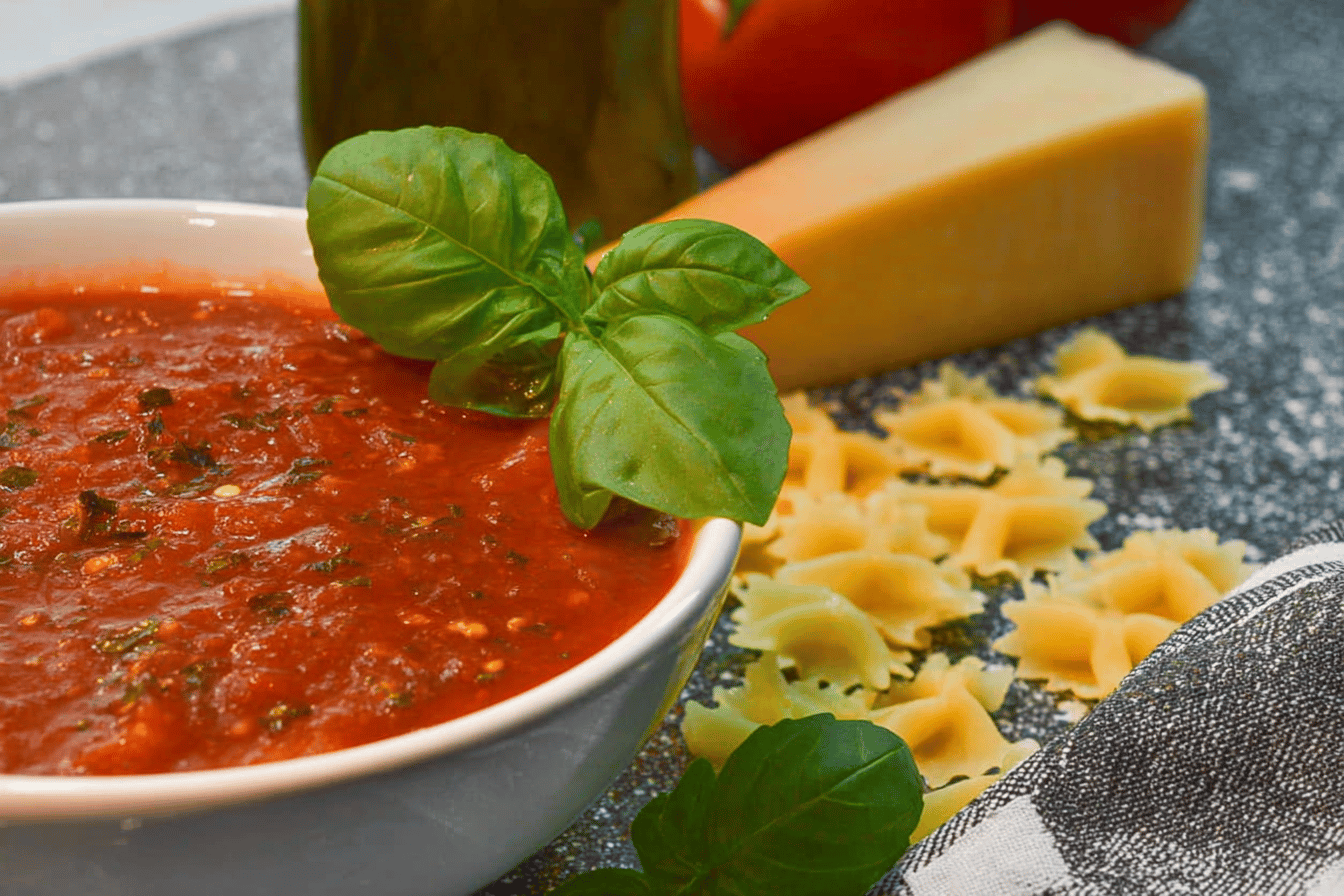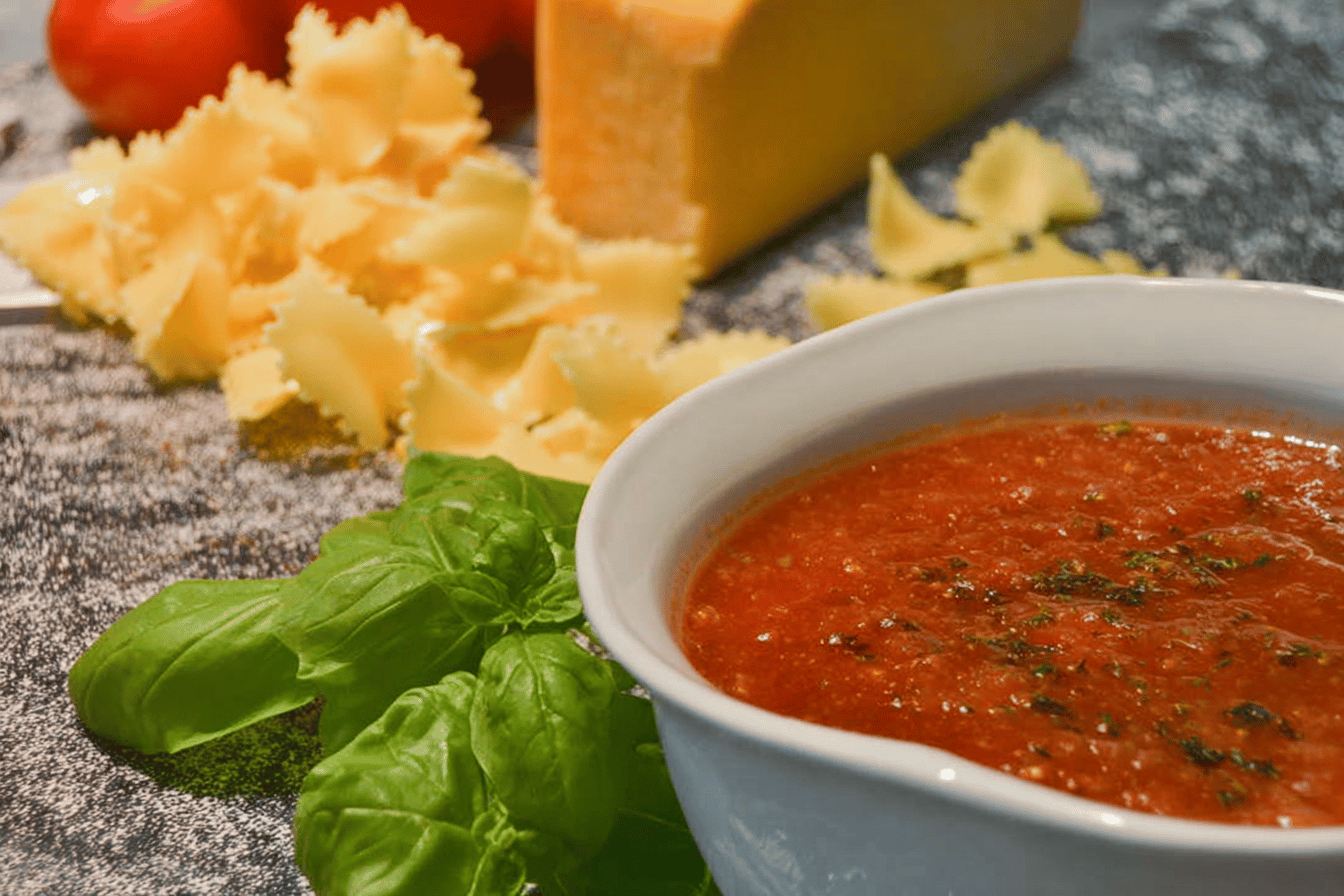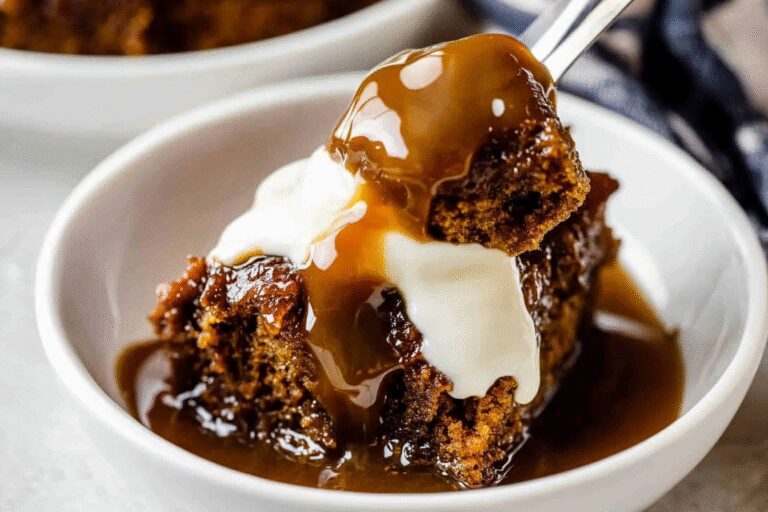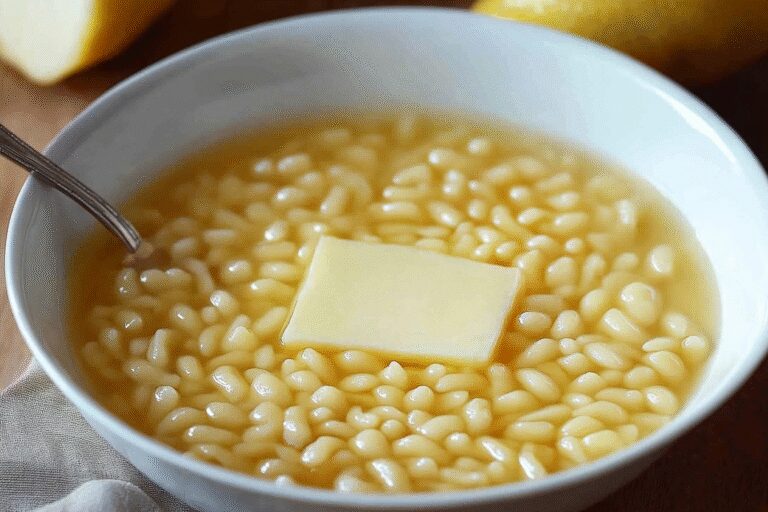Basic Tomato Sauce Recipe
Introduction
If you’re looking for a simple and delicious recipe to elevate your dishes, a basic tomato sauce is the perfect choice. This versatile sauce can be used as a base for countless recipes, from pasta to pizza, or simply enjoyed with freshly baked bread. The key to a rich and flavorful tomato sauce lies in a combination of fresh ingredients and a slow simmering process to allow the flavors to meld together. Whether you’re an experienced cook or just starting in the kitchen, this easy recipe is ideal for anyone.
Detailed Ingredients with Measures
To prepare the perfect tomato sauce, you will need the following ingredients:
– Ripe tomatoes: 6 large ones
– Onion: 1 medium-sized, finely chopped
– Garlic: 3 cloves, minced
– Olive oil: 2 tablespoons
– Salt: 1 teaspoon
– Sugar: 1 teaspoon
– Dried oregano or basil: 1 teaspoon (optional, based on your preference)
– Black pepper: freshly ground, to taste
– Water: 1/2 cup (to adjust consistency)
Prep Time
Preparing your basic tomato sauce doesn’t take much time, but for the best results, you need to ensure the ingredients are prepped correctly. Taking about 10 minutes, you’ll start by washing the tomatoes thoroughly. To easily peel them, blanch the tomatoes in boiling water for a few seconds before transferring them to ice water. Once peeled, chop the tomatoes into small pieces. Finely chop the onions and mince the garlic so they’re ready for sautéing.
Cook Time, Total Time, Yield
The cooking process is straightforward and takes around 30 minutes. In a medium-sized pot, heat olive oil over medium heat and sauté the chopped onions until translucent. Add minced garlic and cook for another minute, making sure it doesn’t burn. Stir in the chopped tomatoes, salt, sugar, and seasonings of your choice. Let the sauce simmer gently for about 20-25 minutes, stirring occasionally to prevent sticking. Add a splash of water if the sauce becomes too thick.
In total, the recipe takes about 40 minutes, including preparation and cooking time. This recipe yields approximately four servings of luscious tomato sauce, perfect to use as a base for your favorite dishes or enjoyed on its own.
“`html
Detailed Directions and Instructions
Step 1: Prepare the Ingredients
Peel and chop the onions and garlic finely. Wash the fresh tomatoes and dice them into small cubes. If you are using canned tomatoes, ensure they are ready to use. Gather all your ingredients in one place to ease the cooking process.
Step 2: Heat the Olive Oil
Place a saucepan on medium heat and add olive oil. Heat it slightly to prepare for sautéing the onions and garlic.
Step 3: Cook The Onions and Garlic
Add the chopped onions to the heated oil and sauté them until they become translucent. Stir occasionally to prevent burning. Once softened, add the minced garlic and sauté for about 1 minute until fragrant.
Step 4: Add the Tomatoes
Add the diced fresh or canned tomatoes to the saucepan. Mix the ingredients until combined to ensure the tomatoes start releasing their juices.
Step 5: Season the Sauce
Season the mixture with salt, sugar, and your desired herbs such as basil, oregano, or thyme. Stir well to combine the flavors. Adjust the seasoning to taste if needed.
Step 6: Simmer the Sauce
Reduce the heat to low and cover the saucepan partially with a lid to allow the steam to escape. Let the sauce simmer for 15-20 minutes, stirring occasionally to prevent it from sticking to the bottom.
Step 7: Blend or Leave Chunky
Decide on the texture of the sauce. You can use the back of a spoon to mash the tomatoes for a chunkier texture or blend the sauce using an immersion blender if you prefer a smoother consistency.
Step 8: Final Adjustments
Taste the sauce and adjust the seasoning once more if needed. If the sauce is too thick, add a few tablespoons of water or vegetable broth to thin it out slightly.
Step 9: Serve or Store
Your tomato sauce is ready to be used immediately in your favorite dish or stored in an airtight container in the refrigerator for up to 5 days. It can also be frozen for longer storage.
Notes
Note 1: Use Fresh Tomatoes for Best Flavor
If possible, use ripe and fresh tomatoes for the richest flavor. However, canned tomatoes are a convenient and equally flavorful option.
Note 2: Adjust Sweetness
The sugar balances the acidity of the tomatoes. Adjust the amount of sugar based on your preference and the natural sweetness of the tomatoes.
Note 3: Herbs are Optional
Feel free to experiment with different herbs and spices to create a unique flavor profile that suits your taste.
Note 4: Storage Tips
Cool the sauce completely before transferring it to a storage container. For freezing, use freezer-safe containers or bags, leaving enough space for expansion.
Note 5: Thicker Sauce Option
If you prefer a thicker sauce, allow it to simmer longer, which will help reduce the liquid content and intensify the flavors further.
“`
Cook Techniques
Finely Chopping the Ingredients
To ensure a smooth texture for your tomato sauce, finely chop the ingredients like onions and garlic. Larger pieces could affect the consistency of the sauce.
Sautéing the Onions
Sauté the onions in oil until they become translucent. This step helps to build a flavorful base for the sauce.
Using Fresh or Canned Tomatoes
The choice between fresh or canned tomatoes is up to you. Fresh tomatoes provide a fresher taste, while canned tomatoes are convenient and consistent.
Simmering Slowly
Allow the sauce to simmer at a low heat for an extended period. This lets the flavors deepen and meld together.
Blending the Sauce
For a smoother and more uniform texture, you can use a hand blender or a traditional blender to puree the tomato sauce.
Seasoning the Sauce
Add salt, pepper, and additional spices to taste, adjusting as needed throughout the cooking process.
FAQ
Can I use fresh tomatoes instead of canned tomatoes?
Yes, fresh tomatoes can be used for a fresher flavor. However, make sure to peel them and remove the seeds for the best texture.
How long should I simmer the tomato sauce?
Typically, the sauce should simmer for at least 30 minutes to allow the flavors to develop fully, but you can go longer if you have time.
What type of oil should I use for sautéing?
Olive oil is recommended as it complements the flavors of the tomato sauce, but you can use other types of oil if preferred.
Can I add extra ingredients to the sauce?
Yes, you can customize the sauce with ingredients like fresh herbs, chili flakes, or even vegetables for added flavor and texture.
How do I store leftover tomato sauce?
Store the leftover sauce in an airtight container in the refrigerator for up to 5 days or in the freezer for longer storage.
Can I skip blending the sauce?
Yes, if you prefer a chunkier texture, you can leave the sauce as is instead of blending it.
What spices work best in this tomato sauce?
Common spices include basil, oregano, garlic powder, and red pepper flakes, but feel free to tailor it to your taste.

Conclusion
A basic tomato sauce is a versatile and essential recipe to have in your cooking repertoire. It’s easy to prepare and serves as a flavorful base for countless dishes. By using simple, wholesome ingredients, you can achieve a sauce that enhances the natural flavors of tomatoes and adds depth to your meals. Make this sauce in batches and enjoy how it elevates your favorite recipes, whether you’re whipping up pasta, pizza, or a comforting casserole.
More recipes suggestions and combination
Tomato Sauce with Pasta
Transform this basic tomato sauce into a delightful pasta dish by tossing it with your choice of pasta and adding grated Parmesan or fresh basil.
Pizza Base Sauce
Use this sauce as a base for homemade pizzas. Spread it over dough, add your favorite toppings, and bake to perfection.
Tomato Soup
Thin the tomato sauce with vegetable or chicken stock, and enjoy it as a warm and comforting tomato soup.
Shakshuka
Add spices like paprika and cumin to the sauce, and poach eggs directly in it for a hearty breakfast or brunch.
Vegetarian Stew
Combine the sauce with a mix of roasted vegetables, chickpeas, or lentils for a delicious vegetarian stew.
Meatball Dish
Pair the tomato sauce with meatballs, serving them over spaghetti or on their own with fresh bread.
Baked Casserole
Layer the sauce with pasta, cheese, and assorted vegetables or protein to create a baked casserole.
Bruschetta Spread
Slightly thicken the sauce and use it as a topping for toasted bread for a simple bruschetta appetizer.







